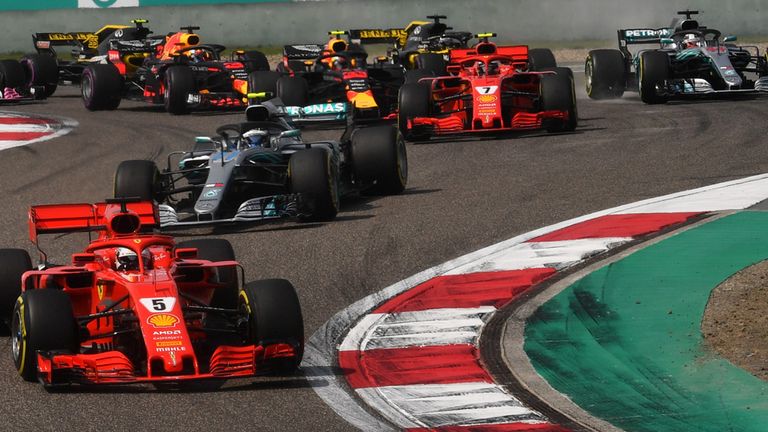Exhaust blowing and trick engine modes: What is it, how is it done, and why is it back in the news?
Confused by all the recent talk about exhaust-blowing gases and trick engine modes in Formula 1?
Tuesday 11 December 2018 15:29, UK
Here's our handy guide, in Q&A style, to F1's latest talk of hot air...
Why is exhaust blowing back in the news?
Ahead of this weekend's Azerbaijan GP, the FIA, F1's governing body, have sent out a technical directive warning teams they will be tightening the rules around exhaust blowing.
Although exhaust-blown diffusers were banned ahead of the 2014 season, the FIA have become alarmed that F1 teams are finding ways around the clampdown through 'trick' engine modes.
How does exhaust blowing aid performance?
In simple terms, the way a car generates downforce is to travel through the air quickly, just the same way as an aeroplane creates lift to propel it into the air.
Fast flowing exhaust gases help to create downforce on parts of the car which wouldn't normally be energised as the car slows down.
'Slows down'? How is exhaust blowing possible when a car is off throttle?
That's the big trick. Essentially, the ICE (the internal combustion engine) within a power unit is turned into big air pump when the driver comes off throttle into the braking zone.
The exhaust gases then mimic what would usually happen as the car passes through the air at much higher speed, creating more grip and stability - and lap time.
Why have the FIA acted now?
In their memo, the FIA said they were reacting to "numerous questions" they had received about the issue. Reading between the lines, it's fair to assume that at least one team has made a complaint.
What have the FIA said?
"We do not accept that engine modes specifically designed to increase the exhaust flow in corners are permissible. We intend to control the usage of engine modes on a case-by-case basis and provide the necessary requests to the teams in order to stay within the acceptable limits."
How big an issue is this?
Probably not, as it was during 2011-2013 - the Red Bull heyday when their reputed skill to find an advantage in this area was considered to be a significant factor in their dominance. These days, exhaust blowing is thought to be far less influential.
Why?
A couple of factors really.
Firstly, in F1's previous era the exhaust system blew directly into the diffuser rather than the rear wing, which was a lot more effective. Secondly, the engine was normally aspirated and revved higher, which would pump out more gases than the current turbo ICE - to the point where drivers were even told to downshift as early as possible to aid exhaust blowing as the higher revs created a faster flow and also to apply the throttle as early as possible in the corner.
So what happens now?
Now we wait and see who, if anyone, falls foul of the FIA's pledge to get tough.
Stay tuned folks...
Who will come out on top in round four of Ferrari, Mercedes and Red Bull's battle for supremacy in F1 2018? Watch the Azerbaijan GP live on Sky Sports F1 this weekend. Get Sky Sports F1.


